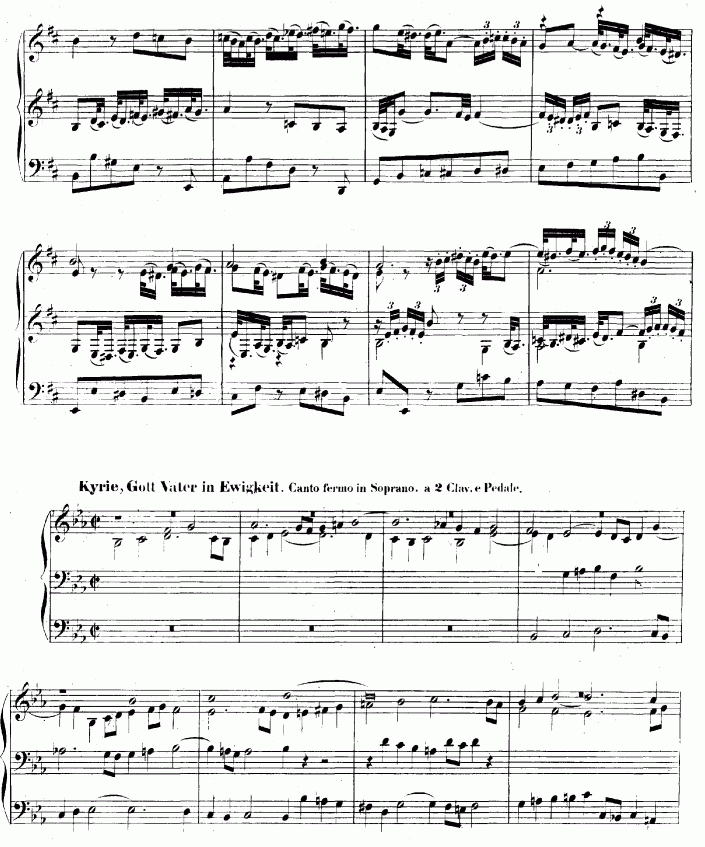| Stile antico Stile antico, literally 'ancient style', is a term describing the contrapuntal, vocal style of the late 16th Italian composers, with Palestrina as primary model (hence: Palestrina style). It's principles were explored by J. J. Fux in his 'Gradus ad Parnassum' (1725), which codified Palestrina's style into a set of rules to train composers in the art of strict polyphony. Stile antico has been associated with Baroque, Classical and Romantic composers of church music. Characteristic features are
Below two examples from Bach's Clavierübung III, the first in a instrumental, baroque style and the second in the vocal, stile antico style. 
Remark In the early Baroque Claudio Monteverdi and his brother coined the term prima pratica to refer to the older style of Palestrina, and seconda pratica (= stile moderno) to refer to Monteverdi's music. |